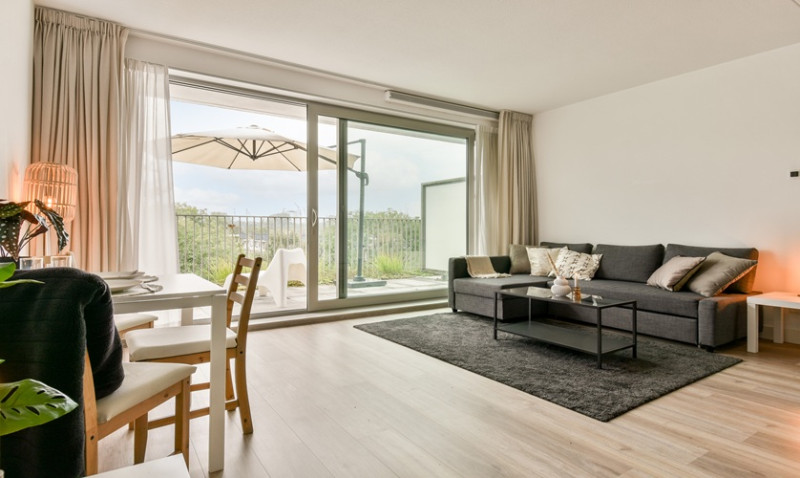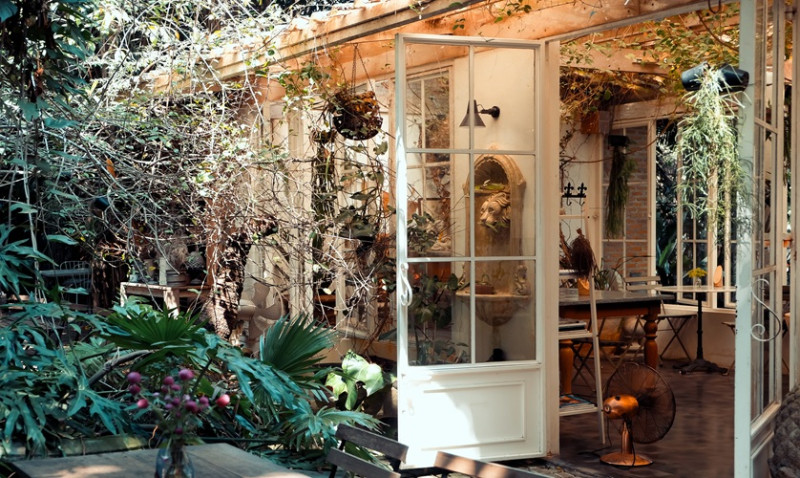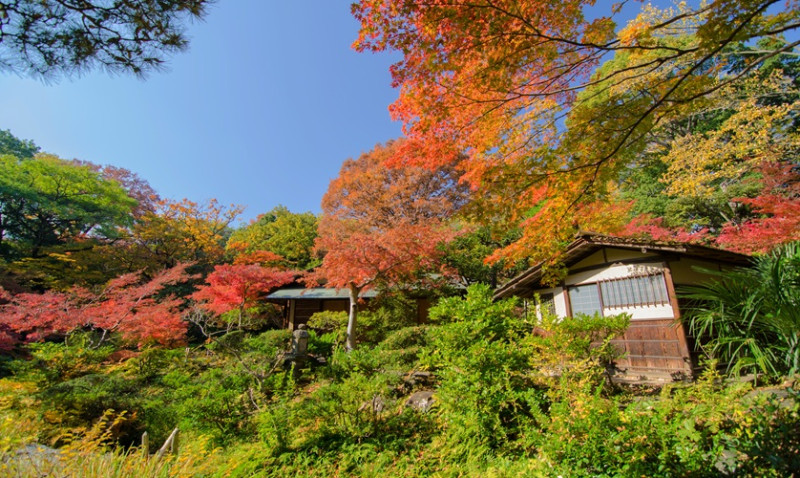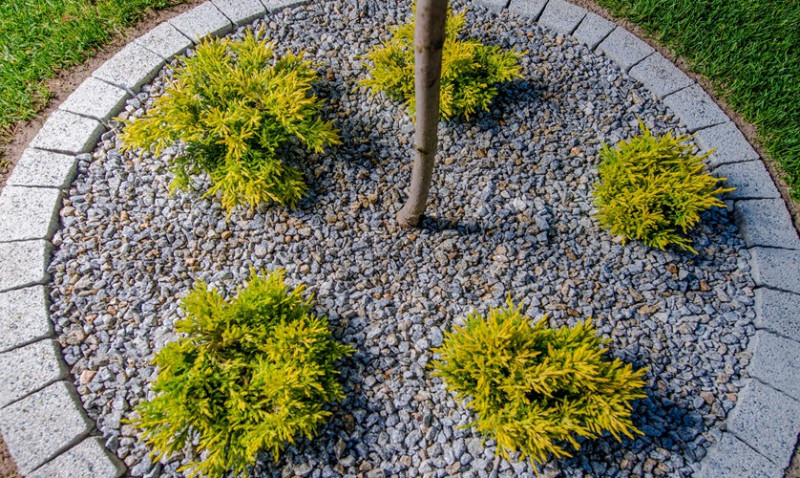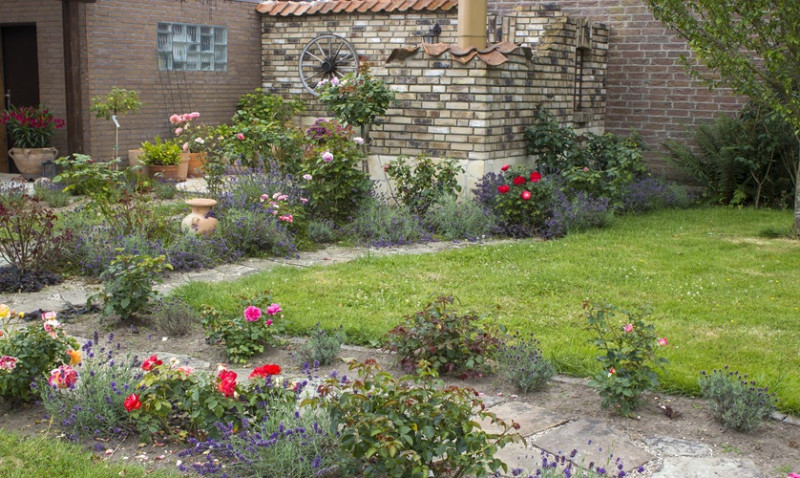
If you're dreaming of transforming a corner of your garden into a tranquil haven, a Japanese garden may be the perfect solution. With its focus on harmony, minimalism, and nature, a Japanese or Zen garden offers more than just visual appeal—it provides a peaceful escape from our busy, modern lives. Whether you're a DIY enthusiast, professional tradesperson, or architect designing for a client, the plant choices you make will have a big impact on authenticity and aesthetic. Below, we've outlined the top 8 plants to give your Japanese garden a timeless, serene look that works beautifully in gardens across the UK.
1. Japanese Maple (Acer palmatum)
The Japanese Maple is perhaps the most iconic plant you can choose for your Zen garden. Known for its delicate, deeply lobed leaves and dramatic seasonal colours, this small tree adds instant character to any outdoor space. In spring and summer, expect lush green or red foliage that transforms into breathtaking crimson and gold finishes in the autumn.
Ideal for both small courtyards and larger garden landscapes, Japanese Maples thrive in well-drained, slightly acidic soil and prefer partial shade—perfect for the UK climate. Their architectural shape also means they work well as focal points or alongside a reflective pond or raked gravel area typical of Zen gardens.
Select dwarf varieties for container planting on patios or use larger trees as centrepieces among stones and mosses. The calm rhythm of falling leaves also contributes to the sensory experience of your garden, ideal for meditation or quiet moments.
Popular cultivars include ‘Bloodgood’, ‘Osakazuki’, and ‘Dissectum’ for their size range and varied leaf shape.
2. Bamboo (Phyllostachys spp.)
No Japanese garden is complete without the gentle rustle of bamboo swaying in the wind. Bamboo plants lend height, grace, and movement to any garden layout. Their upright canes and evergreen foliage can provide privacy screening or act as a natural divider between sections of your Zen space.
Although traditionally associated with warmer climates, many types of bamboo grow extremely well in the UK. Non-invasive clumping varieties such as Fargesia are recommended, as they are far easier to manage and won’t spread uncontrollably across your garden space.
Bamboo is symbolic in Japanese culture—representing strength, flexibility, and resilience. It’s also a low-maintenance plant that enjoys partial to full sun and adapts well to most soil types.
Pair bamboo with traditional elements such as stepping stones, a water feature, or a narrow gravel path to enhance the tranquil flow and design.
3. Japanese Forest Grass (Hakonechloa macra)
For movement and texture at ground level, few plants rival the elegance of Japanese Forest Grass. Its arching, ribbon-like blades ripple in the breeze, bringing a gentle rhythm that perfectly complements the contemplative philosophy of Zen spaces.
Ideal for shaded borders, under shrubs, or near seating areas, Hakonechloa macra is especially appreciated in London and urban gardens where space is limited and subtle beauty makes a big impact.
The most popular variety, ‘Aureola’, boasts bright green-and-yellow striped leaves, which turn soft shades of red and gold in autumn. It's a slow spreader that forms tidy clumps—perfect for both contemporary and rustic settings.
Use it in raised planters, gravel beds, or lining winding garden paths. The low height and lush form make it a suitable counterbalance to upright structures like bamboo or stone lanterns.
4. Azalea and Rhododendron
Famed for their vivid blooms, Azaleas and Rhododendrons are staples in traditional Japanese gardens, often used to provide splashes of seasonal colour and contrast against more subdued elements like stone or moss.
Azaleas are especially popular due to their compact habit and the wide variety of flower colours available—from deep pinks and reds to white and lavender. In Japanese symbolism, they represent fragility and feminine beauty.
These acid-loving shrubs thrive in the UK’s cooler, wetter climate and prefer dappled shade in well-drained but moisture-retentive soil. They work beautifully planted en masse by water features, bridges, or amongst mossy mounds for a pop of colour against verdant green backdrops.
For best results, try Encore or Kurume hybrids and prune lightly after flowering to maintain shape and encourage growth.
5. Moss (Bryophyta spp.)
Often overlooked in western gardens, moss offers a rich green carpet that embodies tranquillity and age—frequently found in temples, shrines, and historic gardens across Japan.
Ideal for shady, moist areas, moss is the ultimate ground cover for a pure Zen aesthetic. It cushions footpaths, surrounds stepping stones, and grows between cracks in rocks with a wabi-sabi elegance.
Moss does well in the UK's humid climate and acid soils. It doesn’t need mowing, spraying, or fertilising, making it a great low-maintenance option for eco-conscious designers.
You can cultivate moss either from rolled mats or by encouraging spore establishment, sometimes using a moss-and-milk "slurry" on rocks and soil to boost growth.
Note that different moss types are suited to different microclimates, so check light and moisture levels in your garden area before selecting your variety.
6. Black Pine (Pinus thunbergii)
The Japanese Black Pine is a stately evergreen that adds structure and permanence to any Zen garden. With its dark bark, sweeping branches, and twisted trunks, it serves as both a strong visual element and a symbolic reference to endurance and longevity.
It’s highly adaptable to UK weather once established and can thrive in sandy or rocky soils with good drainage. When pruned and sculptured through the practice of Niwaki (Japanese topiary), the Black Pine becomes a living sculpture—a mark of mature and refined garden design.
This tree is best positioned as a standalone specimen, drawing attention near water features, stone lanterns, or meditation benches. You can also train younger trees into bonsai forms for patios or indoor Zen displays.
When properly cared for, Black Pines can live for decades, making them a lasting legacy in garden design projects.
7. Camellia japonica
Another flowering shrub with Japanese heritage, Camellia japonica is prized for its glossy evergreen leaves and elegant rose-like blooms, which appear in early spring when most plants are still dormant.
The blooms—symbolising admiration and perfection—come in white, pink, and deep red, and they add formality to garden borders, entryways, or around courtyards.
Camellias prefer acid to neutral soil and partial shade, making them perfect for UK gardens and complementing other acid-loving plants like azaleas and ferns.
Regular watering and occasional pruning after flowering will keep the plants tidy. Mulching with pine bark or leaf mould helps maintain soil acidity and reduce moisture loss.
8. Ferns (Dryopteris and Polystichum spp.)
Ferns, with their delicate fronds and lush texture, are an essential soft element in Japanese gardens. They’re often used to create balance between rough stone textures and the clean lines of gravel layouts.
Many UK-native ferns are ideal for Zen planting. Species like Dryopteris filix-mas (Male Fern) and Polystichum setiferum (Soft Shield Fern) are hardy, shade-tolerant, and maintain structured form throughout the seasons.
These ferns thrive under trees, near water features, or among boulders and stepping stones where moisture is consistent. With minimal upkeep, they naturalise beautifully and contribute to the layered, immersive feel of a mature Zen garden.
To add visual interest, use a mix of fern types with varied frond textures, such as the matte Dryopteris erythrosora or the intricate Japanese Painted Fern (Athyrium niponicum).
Final Thoughts
Crafting a Japanese garden takes thoughtful planning, but the rewards are long-lasting. These eight plant choices not only adhere to traditional aesthetics but are also practical for UK-based gardeners looking for low-maintenance, evergreen beauty and year-round serenity.
Whether you're transforming a courtyard with soft moss and stone features or redesigning a large garden with maples and pines, choosing the right plants lays the foundation for a peaceful, meaningful space that enhances your home or project with timeless Eastern charm.
Embrace simplicity. Let nature guide your design. And above all, create a space that encourages reflection, mindfulness, and calm.
